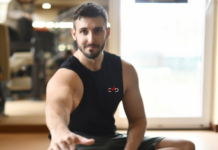Table of Contents
Exercise Daily – Alternative healing practices, including complementary and integrative medicine (CAM), have garnered significant attention in recent years as people increasingly seek holistic and natural approaches to healthcare. Let’s delve into diverse healing practices recognized by organizations such as the National Center for Complementary and Integrative Health (NCCIH) and the National Institutes of Health (NIH). From traditional medicine to examples such as Ayurvedic and naturopathic medicine, we’ll explore how these alternative treatments, including practices like acupuncture, tai chi, and chiropractic medicine, can complement conventional healthcare.
Many complementary and alternative therapies use a holistic approach, incorporating mind-body therapies, spiritual practices, and manipulative and body-based methods to improve health. While some believe alternative medicine may replace conventional treatments, others see it as a valuable addition to existing healthcare practices.

Complementary and Alternative Medicine (CAM)
CAM refers to a diverse range of medical and healthcare systems, practices, and products that are not considered part of conventional medicine. These approaches often complement conventional treatments and aim to promote healing and well-being. Various therapies fall under the umbrella of CAM, including acupuncture, massage therapy, herbal medicine, and more. While CAM offers promising possibilities, it’s essential to understand the benefits and limitations associated with these practices.
Holistic Healing Practices
Holistic healing takes a comprehensive approach to health, considering the body, mind, and spirit as interconnected entities. It focuses on addressing the root causes of health issues rather than merely treating symptoms. Holistic healing practices encompass many therapies, such as meditation, yoga, energy healing, and nutritional therapy. By integrating these practices with conventional medicine, individuals can achieve a more holistic and balanced approach to their well-being.
It’s important to note that the use of alternative medicine among health professionals and the general public varies, with some embracing these therapies and others remaining skeptical. However, rigorous research continues to explore the therapeutic benefits of these practices, evaluating their safety, effectiveness, and influence on health.
Mind-Body Therapies
Mind-body therapies recognize the powerful connection between the mind and the body, emphasizing the influence of thoughts, emotions, and beliefs on physical health. Examples of mind-body treatments include meditation, biofeedback, hypnotherapy, and relaxation techniques. These practices have shown remarkable benefits in reducing stress, managing chronic pain, and improving overall well-being. Research continues to uncover the mechanisms by which mind-body therapies positively impact health.
In exploring types of holistic healing and alternative medical systems, we’ll examine how practices like controlled breathing, dietary supplements, and the innate healing response can be utilized alongside or in place of conventional medicine to address conditions such as low back pain and promote overall well-being. While some may question the scientific basis of these therapies, others find value in their ability to tap into the body’s natural healing systems.

Acupuncture as an Alternative Therapy
Acupuncture, originating from ancient Chinese medicine, involves the insertion of thin needles into specific body points. It aims to restore balance and promote the body’s natural healing abilities. Acupuncture has been used for centuries to treat various conditions, including pain management, digestive disorders, and mental health issues. Scientific studies have demonstrated its effectiveness in alleviating pain and stimulating the release of natural painkillers within the body.
Massage Therapy for Healing
Massage therapy involves manually manipulating soft tissues in the body to promote relaxation, relieve muscle tension, and enhance overall well-being. Different techniques, such as Swedish massage, deep tissue massage, and aromatherapy massage, offer unique benefits. Massage therapy has effectively reduced stress, improved circulation, and relieved muscle pain. It is widely used in integrative healthcare settings and is often recommended as a complementary therapy alongside conventional treatments.
Reiki as a Holistic Healing Practice
Reiki is a form of energy healing that originated in Japan. It involves gently placing hands on or above the body to channel healing energy. Reiki aims to restore balance and promote the body’s natural healing abilities. Many individuals report feelings of deep relaxation, reduced stress, and emotional healing after receiving Reiki treatments. While scientific research on Reiki is limited, anecdotal evidence and personal experiences highlight its potential benefits.

Complementary Medicine Systems
Complementary medicine encompasses various medical systems used alongside or in conjunction with conventional medicine. Traditional Chinese Medicine (TCM) has been widely practiced for centuries, focusing on balancing energy and utilizing herbal remedies. Ayurveda, the ancient Indian medicine system, emphasizes personalized treatments and holistic approaches. Naturopathy combines natural therapies and lifestyle modifications to support the body’s healing processes.
Integrative Medicine and Evidence-Based Practices
Integrative medicine combines conventional medical practices with evidence-based complementary therapies. It emphasizes a patient-centered approach, considering the individual’s unique needs and preferences. Integrative medicine utilizes scientific research to support the effectiveness and safety of various alternative healing practices. By integrating evidence-based practices, individuals can make informed decisions about their healthcare and receive comprehensive treatments.
Safety and Considerations in Alternative Healing Practices
When exploring alternative healing practices, it’s essential to prioritize safety and consider potential interactions with conventional treatments. While many alternative therapies are safe and effective, consulting with healthcare professionals before starting any new therapies is crucial. Integrating alternative healing practices with conventional medicine can provide a holistic approach to health, ensuring the best possible outcomes. Open communication and collaboration between healthcare providers and individuals are essential for optimal care.
Exploring Alternative Healing for Specific Health Conditions
Alternative healing practices offer a range of benefits for specific health conditions. For chronic pain management, therapies such as acupuncture, massage therapy, and mind-body techniques can provide relief and improve quality of life. Practices like meditation, yoga, and aromatherapy can reduce anxiety and stress. Alternative healing practices can also enhance overall well-being and promote a balanced lifestyle.

FAQs – Explore Alternative Healing Practices
Q: Can alternative healing practices replace conventional medicine?
A: Alternative healing practices should not replace conventional medicine but can be complementary to support overall health and well-being. It’s important to collaborate with healthcare professionals to ensure comprehensive care.
Q: How do I choose the right alternative therapy for me?
A: Choosing the right alternative therapy depends on your needs, preferences, and health conditions. Researching different therapies, consulting with healthcare professionals, and considering individual experiences and recommendations is advisable.
Q: Are alternative healing practices scientifically proven?
A: While scientific research on alternative healing practices continues to grow, not all therapies have extensive scientific evidence. However, many practices have shown promising results in clinical trials and have been used effectively by individuals worldwide.
Q: What are some common misconceptions about alternative healing?
A: Common misconceptions about alternative healing include believing it is solely based on placebo effects or lacks scientific validity. However, numerous practices have scientific evidence supporting their effectiveness, and they can be valuable additions to conventional treatments.
Q: Is alternative healing suitable for children and older adults?
A: Alternative healing practices can suit individuals of all ages, including children and older adults. However, it’s essential to consider individual needs, consult with healthcare professionals, and ensure the safety and appropriateness of specific therapies.
Conclusion
Exploring alternative healing practices offers a holistic approach to healthcare that considers the interconnectedness of the body, mind, and spirit. From CAM therapies to mind-body practices and integrative medicine, these approaches provide valuable options for enhancing well-being and promoting natural healing. By integrating alternative healing with conventional medicine and seeking guidance from healthcare professionals, individuals can embark on a comprehensive journey toward optimal health and vitality.






